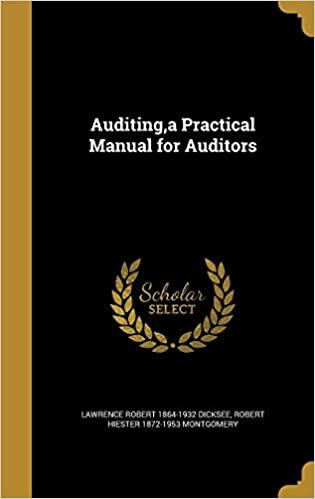Answered step by step
Verified Expert Solution
Question
1 Approved Answer
I need to find out the answers of 2, 3 ,4 and 5. Place the correct answer (letter) in the box to the left of

I need to find out the answers of 2, 3 ,4 and 5.
Place the correct answer (letter) in the box to the left of the question. 1. True (T) or False (F). As the discount rate falls, the value of the project also falls. 2. A company is looking at replacement equipment. The existing equipment had an original cost of $985 and currently has a book value of $325. If the equipment could be sold for $500, what are the pre-tax gain (loss), the after-tax gain (loss), and the related cash flow? Assume a 36.5% tax rate and any losses will be immediately offset gains somewhere else within the corporation. a. Pre-tax gain of $175: after-tax gain of $111: cash flow of $436. b. Pre-tax loss of $485: after-tax loss of $308: cash flow of $677. c. Pre-tax gain of $175: after-tax gain of $64: cash flow of $436. d. Pre-tax loss of $485: after-tax loss of $177: cash flow of $677. 3. The discounted pay back method may lead to the wrong decision because a. The emphasis placed on the discount rate. b. It ignores cash flow beyond the payback period. c. The payback period is difficult to calculate. d. The cash flows in the later years are uncertain. The following information is detailed within a capital expenditure status report: Which statement is correct? a. The project is currently under budget by $3, 502. b. The project currently has $1, 146 before it goes over budget. c. The revised forecast reflects that the project will come in slightly under budget. d. All of the above. YOU CAN DO THIS! The following table examines sensitivity (growth and COGS) on the projected year 3 net income as below, please select the best answer to the question: Which of the following is a false statement: a. Cost management has a bigger impact on year 3 net income than sales growth. b. The ideal scenario is 2% added growth and a 2% cost reduction. c. A tradeoff 2% more growth but a 1% higher COGS is more advantageous than the base case. d. A tradeoff 2% less growth and 1% lower COGS is more advantageous than the base caseStep by Step Solution
There are 3 Steps involved in it
Step: 1

Get Instant Access to Expert-Tailored Solutions
See step-by-step solutions with expert insights and AI powered tools for academic success
Step: 2

Step: 3

Ace Your Homework with AI
Get the answers you need in no time with our AI-driven, step-by-step assistance
Get Started


